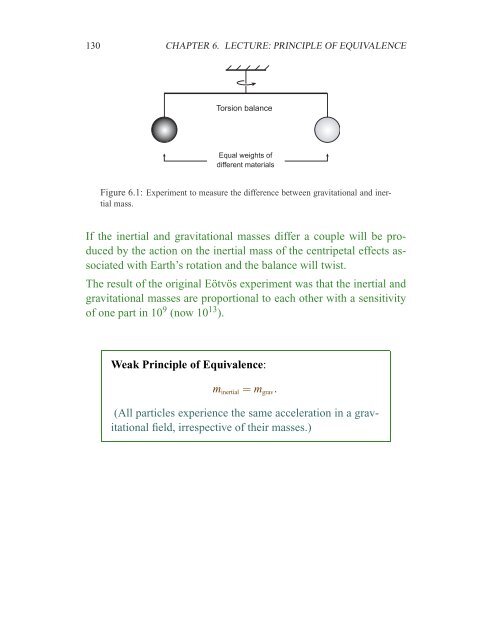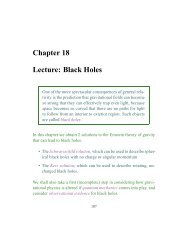Chapter 6 Lecture: Principle of Equivalence
Chapter 6 Lecture: Principle of Equivalence
Chapter 6 Lecture: Principle of Equivalence
You also want an ePaper? Increase the reach of your titles
YUMPU automatically turns print PDFs into web optimized ePapers that Google loves.
130 CHAPTER 6. LECTURE: PRINCIPLE OF EQUIVALENCE<br />
Torsion balance<br />
Equal weights <strong>of</strong><br />
different materials<br />
Figure 6.1: Experiment to measure the difference between gravitational and inertial<br />
mass.<br />
If the inertial and gravitational masses differ a couple will be produced<br />
by the action on the inertial mass <strong>of</strong> the centripetal effects associated<br />
with Earth’s rotation and the balance will twist.<br />
The result <strong>of</strong> the original Eötvös experiment was that the inertial and<br />
gravitational masses are proportional to each other with a sensitivity<br />
<strong>of</strong> one part in 10 9 (now 10 13 ).<br />
Weak <strong>Principle</strong> <strong>of</strong> <strong>Equivalence</strong>:<br />
m inertial = m grav.<br />
(All particles experience the same acceleration in a gravitational<br />
field, irrespective <strong>of</strong> their masses.)



